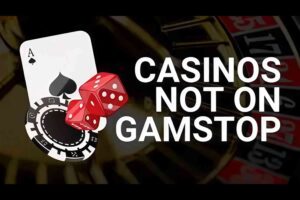Progressive jackpots have captured the imagination of casino players for decades. The allure of a life-changing win—sometimes reaching millions—drives countless spins on slot machines worldwide. Yet behind the glitz and colossal numbers on display lies a sophisticated network of technology, mathematics, and marketing strategy. In this article, I’ll demystify the mechanics of modern progressive jackpots, drawing on my years testing casino games and observing jackpot systems in action. By the end, you’ll understand how progressive pools grow, how wins are triggered, and what factors influence your chances—and you’ll also discover why some savvy players explore non gamstop casinos for access to unique jackpot opportunities.
Progressive jackpots differ from standard slot prizes in one key way: a portion of each bet contributes to a shared prize pool. Over time, this pool accumulates, swelling the advertised jackpot. When a fortunate spin matches the required symbols or triggers a bonus round, the jackpot resets to a predetermined base value and the cycle begins anew.
Whether you’re spinning at a neighborhood casino or sampling digital titles on non gamstop casinos, the core principles remain consistent. Let’s break down how modern progressive systems weave together to deliver those tantalizing, ever-growing jackpots.
The Building Blocks of a Progressive Jackpot
At its heart, a progressive jackpot consists of three essential components: the base jackpot, the contribution rate, and the triggering mechanism.
The Base Jackpot
When a progressive slot goes live, it starts from its base jackpot—often a modest amount like $10,000 or $50,000. This guaranteed minimum ensures every jackpot won is significant. Once claimed, the jackpot reverts to this base before climbing again.
Contribution Rate
The growth of a progressive jackpot depends on the contribution rate: the percentage of each bet that feeds the pool. In modern slots, contribution rates typically range from 1% to 5%. For instance, if you wager $1 on a slot with a 2% contribution rate, $0.02 goes toward the jackpot.
Triggering Mechanism
Progressive jackpots can be won in different ways. On many slots, you must land a specific symbol combination—such as five jackpot icons on an eligible payline. Alternatively, some games trigger a random jackpot bonus, irrespective of spin outcome, through weighted RNG events.
Types of Progressive Jackpots
Not all progressives operate the same way. Understanding the distinctions can help you choose which games suit your style.
Standalone Progressives
These jackpots apply to a single machine. All contributions from players on that specific machine fund its prize pool. Although rare in today’s networked environment, standalone progressives occasionally appear in smaller venues.
Local Area Progressives
Local area progressives link several machines within one casino or venue. For example, seven machines in a live casino might share a common progressive pool. This increases the growth rate of the jackpot compared to a standalone machine while still limiting contributions to a confined set of players.
Wide-Area (Networked) Progressives
The most famous progressive jackpots are wide-area progressives—sometimes called networked or pooled progressives. These machines connect across multiple casinos, often spanning regions or even countries. Because thousands of players contribute, the jackpot inflates rapidly, sometimes adding hundreds or thousands of dollars every minute.
Example: Mega Moolah
Mega Moolah, a Microgaming progressive slot, has awarded multiple multi-million-dollar jackpots by pooling contributions from online casinos worldwide. Its growth rate and frequent media coverage have made it a go-to title for jackpot chasers.
Behind the Scenes: Random Number Generators and Odds
Modern slots, including those with progressives, rely on Random Number Generators (RNGs) to ensure fairness. The RNG continuously generates numbers, even when the machine is idle. When you press spin, the current RNG output determines symbol positions.
Weighting Progressive Triggers
For progressive jackpots, the RNG must balance regular spin outcomes with jackpot-winning events. Developers assign extremely low probabilities to jackpot-triggering combinations or bonus triggers. For example, hitting the five-jackpot-symbol combination might have odds of 1 in 5,000,000 spins, calibrated based on the contribution rate and desired return-to-player (RTP).
RTP and Jackpot Contribution
Every slot advertises an RTP—a theoretical percentage of wagered money returned to players over time. Progressive slots factor jackpot contributions into their RTP calculations. If a slot advertises a 93% RTP with 3% allocated to the progressive, that means 90% goes back to base-game wins, and 3% funds the jackpot pool.
Strategies and Misconceptions
While progressive jackpots are thrilling, several misconceptions can skew player expectations.
The “Hot” Machine Myth
Progressive jackpots grow with each bet, but that doesn’t mean a jackpot is “due” when it reaches a certain size. Each spin’s chance of hitting the jackpot remains constant, governed by RNG probabilities.
Bet Size and Eligibility
Certain progressives require the maximum bet to qualify for the jackpot. This design ensures sufficient contributions to the pool and prevents players from exploiting low-stake spins. Always check the paytable to confirm qualifying bets.
Timing Your Play
Some players believe jackpots are more likely at slower hours when fewer contributions are feeding the pool. In reality, contribution volume affects growth rate, not spin odds. A jackpot might be smaller after a slow period, but triggering odds remain static.
Real-World Example: Casino Floor vs. Online Pools
In a land-based casino, networked slot banks often display a progressive meter above the machines in the lobby. These link to multiple floors or even sister properties. Players feeding coins or cashless tickets see the meter climb in real time.
Online, the experience is digital but functionally identical. A meter on the slot interface grows with each real-money spin. Live chat windows or notifications may alert players to recent major wins, further fueling excitement.
Why Non GamStop Casinos Offer Unique Progressives
Self-exclusion schemes like GamStop provide safeguards for vulnerable players but restrict access to certain UK-based sites. Players seeking diverse progressive pools sometimes turn to non GamStop casinos, which operate outside this network. While exploring these platforms, it’s crucial to verify licensing, fair-play certifications, and secure payment methods.
In my experience, some non-GamStop operators partner with niche software providers to host exclusive progressive networks, offering unique themes and derivers of growth rates not found on mainstream UK sites. Always research credentials to ensure fairness and security when chasing jackpots beyond standard jurisdictions.
Responsible Play and Jackpot Jackpots’ Allure
Progressives’ grand prizes can overshadow underlying risks. The promise of a colossal win may lead players to chase jackpots beyond their budget. Setting loss limits, time limits, and understanding that the rare jackpot win doesn’t counteract sustained losses is vital.
Affordability and Entertainment
View progressive slots as entertainment first, investment second. Budget for spins you can afford to lose, and treat any jackpot win as a delightful bonus, not an expectation.
Conclusion
Progressive jackpots blend cutting-edge RNG technology with clever contribution mechanics to deliver some of casino gaming’s most tantalizing prizes. Whether on the casino floor or through non gamstop casinos, the principles remain the same: a small slice of every bet swells a shared prize pool until one lucky spin unlocks life-changing sums. By understanding base jackpots, contribution rates, triggering odds, and responsible play strategies, you can approach progressive slots with both excitement and insight. So next time you see that progressive meter ticking upward, remember the carefully calibrated dance behind each growing digit—and spin with knowledge rather than myth.





